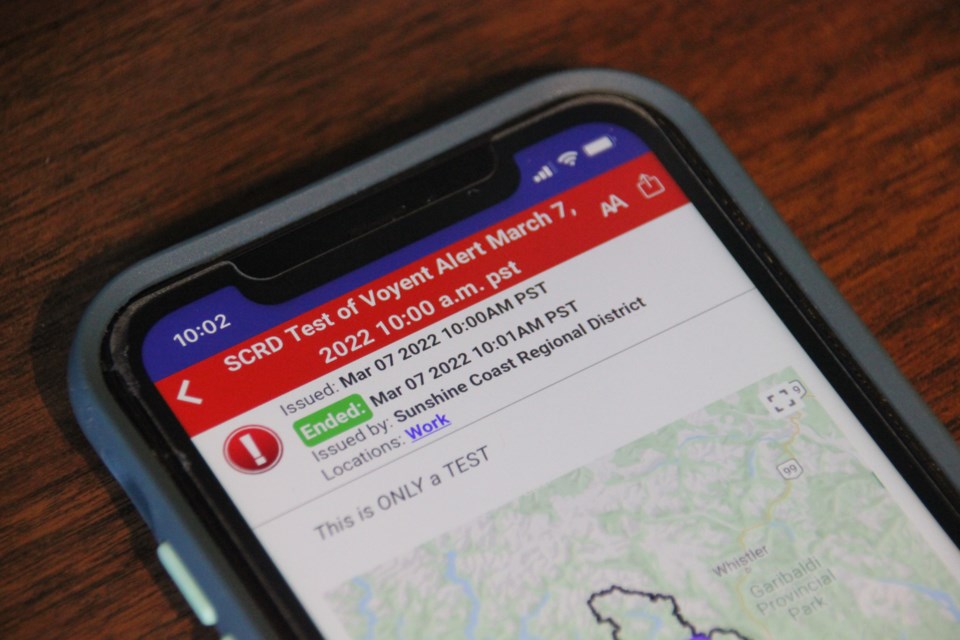A sudden, blaring sound came out of telephones across the Sunshine Coast Regional District (SCRD) on March 7 at 10 a.m.
The sound was accompanied by a brief message: “This is a TEST of the Sunshine Coast Regional District Emergency Alert System. This is ONLY a TEST. If this had been an actual emergency or threat, you would now see or hear instructions with information to help keep you safe. For further information go to scrd.ca/alert-system. This is ONLY a TEST, no action is required.”
It was the first test of the SCRD’s new emergency alert system, Voyent Alert, which was launched last December.
At the SCRD’s Field Road office, staff gathered in a meeting room to see the notification in action on a large screen and their individual devices. Matt Treit, the SCRD’s manager of protective services, told Coast Reporter it went well.
The 2,379 people subscribed for the alerts by the time of the test would have been notified immediately. The only exception, Treit said, would be for those subscribed to be notified by a phone call on a landline. If they were not home, the line was busy, or they did not answer the phone at that time, the system would continue to try to contact them for up to 24 hours. Residents can also be notified by their choice of smartphone app, text message and/or email.
Shortly before the trial, the SCRD’s communication system had about 1,600 subscribers. A surge of subscriptions followed the regional district’s promotions of the March 7 test, and Treit credits the SCRD’s communications team for the increase.
“When it first started [in December], there was a huge jump, and then it sort of plateaued as things often do. Then recently, there’s been another spike, and I attribute that to the renewed advertising around our test notification,” Treit said.
Treit said that in speaking with other jurisdictions using Voyent Alert, 30 per cent of the population subscribing is considered a good number. He pointed out that among the total population are children who would naturally not subscribe to such a service. A quarter of the SCRD’s population receiving the alerts would be more realistic, he added. Once real alerts are sent in an emergency situation, Treit anticipates renewed interest in the system.
“When those events do come, I think it really brings to the forefront the value of being subscribed to a system like this, where people can get direct notification and direct instruction.”
Besides the annual system test, the SCRD will only use Voyent Alert in emergency situations where residents may need to take action. This could include emergency evacuations, boil water advisories and the like. These alerts can be highly localized to an exact area for events where the whole regional district does not need to be notified, and can include maps, images, messages, web links, and instructions. Users can sign up for alerts that cover their home, school and work locations.
“It’s designed to inform people about an emergency that generally is going to require some sort of action on their part,” Treit said. “So we would not use it for if there is a road closure. We would not use it just to announce that there was a wildfire somewhere. We would use it for an evacuation alert or an evacuation order.”
Other information will continue to be distributed through the SCRD’s other channels, such as its website and social media platforms.
“We don’t want it to be something that they get so many notices that you’d kind of tune it out,” Treit said.
The SCRD is encouraging all residents to subscribe to Voyent Alert. Anyone having an issue signing up can contact SCRD staff for assistance, although Treit said the process is quite straightforward. More information is available at www.scrd.ca/alert-system.



